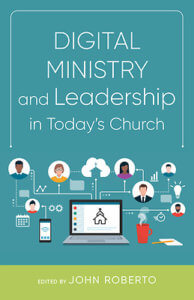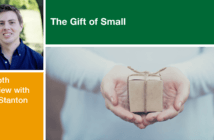How can a digital playlist enhance hybrid and online faith formation? John Roberto shares two approaches for creating digital playlists to strengthen faith formation.
The digital playlist has become an essential resource for designing hybrid and online faith formation. What the textbook was to the print era, the playlist is to the digital world. It provides the learning content in an interactive, personalized, multimedia format — with a variety of ways to learn and experience the content.
The idea of a playlist is simple: it is a sequence of activities and resources on a topic designed for individual and/ or small-group learning, usually available on a digital form. Playlists make faith formation available at any time. They are a way to personalize faith formation around the needs and interests of each life stage and the diversity of people’s spiritual and religious needs. Playlists make the learner of any age the center of faith formation, providing multiple ways to grow in faith. The responsibility for learning and growing in faith shifts from the provider to the person.
An education playlist is similar in concept to a music playlist, in which a person curates music from a variety of artists into a group of songs selected because they are favorites, are from the same musical genre, or are on a similar theme. Faith formation playlists are topical and can be designed for a season of the church year, a theological topic, a biblical story or teaching, a social concern, a life-cycle issue, and more.
Playlists can be designed using a menu approach of faith-forming activities where people select activities that address their needs, interests, or time availability. Playlists can also be designed using a sequenced approach using a learning process to structure the faith formation experiences and activities. Playlists can include synchronous (real-time, scheduled) activities and asynchronous (on-your-own) activities.
Playlists can be published on a website, in a learning management system (Google Classroom, Edmodo, Seesaw), or even in a newsletter or blog that allows for video to be embedded. Social media, especially Instagram, is useful for sharing learning projects and reflections. It is important that the playlists are available 24/7 on a digital platform. Creating a faith formation website (lifelong or for targeted audiences) is often the best option. Building a website is made much easier today by the availability of online website builders that provide predesigned website templates, drag-and-drop features to create web pages, and hosting for the website.
For examples of faith formation playlists, go to the Family Faith Playlists section of the Michigan Conference United Methodist Church website at michiganumc.org/playlists to view (or use) the playlists developed by Rev. Kathy Pittenger. For a curated list of playlists, go to my website at LifelongFaith.com.
Approach 1. A Menu of Faith Formation Activities
In the menu approach, activities and experiences are organized into categories. Create a menu for an individual topic or event by curating a variety of ways to explore and experience a season of the church year, a theological topic, a biblical story or teaching, a social concern, or a life-cycle issue.
Approach 2. Sequenced Learning on a Topic or Theme
In the sequenced approach, a learning process structures the faith formation experiences and activities on the playlist. Playlists can include synchronous (real-time, scheduled) activities and asynchronous (on-your-own) activities. An excellent process for learning, based on the 4MAT learning cycle developed by Dr. Bernice McCarthy (see aboutlearning.com), has four movements: experience the topic, explore knowledge about the topic, practice and demonstrate personal learning, and perform and present the learning.
 Excerpted from “Faith Formation in the Digital Age” by John Roberto in Digital Ministry and Leadership in Today’s Church (Liturgical Press, 2021) edited by John Roberto. Used by permission. The book is available at Liturgical Press, Cokesbury, and Amazon.
Excerpted from “Faith Formation in the Digital Age” by John Roberto in Digital Ministry and Leadership in Today’s Church (Liturgical Press, 2021) edited by John Roberto. Used by permission. The book is available at Liturgical Press, Cokesbury, and Amazon.
Related Resources
- The Holy Work of Hybrid and Virtual Christian Education featuring Tanya Campen — Leading Ideas Talks podcast episode | Podcast video | In-depth interview
- 4 Audiences for Digital Engagement by Jessica L. Anschutz
- Building Vibrant Community Connections in Digital and Physical Spaces featuring Jordana Wright — Leading Ideas Talks podcast episode | Podcast video | In-depth interview






